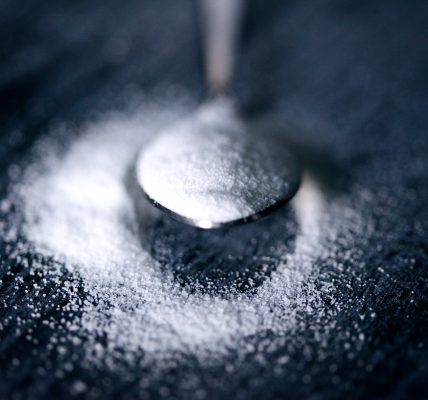Brain Structure and Substance Abuse

A study out of the Indiana University School of Medicine that we covered here a couple of weeks ago is causing quite a stir. Published on New Year’s Eve in JAMA Network Open, the research analyzed brain scans of children made by the ABCD Study, following them for five years from age nine into adolescence.
That research indicated that brain size is positively correlated with the earlier onset of substance use, and that children with larger brains at age nine — even though they have not yet initiated substance use — are more likely to try it as they age.
Reason magazine took the stand that it’s the “structure of brains incline[s] some people toward using those substances,” therefore interventions can be based on childhood brain size. As we pointed out, however, the study does not look at how those brains got bigger. If childhood brain size is correlated with stress, it is likely that stress, not structure, drives children to experiment with drugs.
Now Scientific American is weighing in on the study, saying it “flips our story of addiction and the brain.” They contrast the scenario of gateway drugs leading to addiction with the scenario of biological predisposition: addiction as the result of early brain structure. This is a preposterous straw man unless you examine the role of stress and abuse in brain development.
A study published in the journal, Neurobiology of Stress, does just that: It examines the impacts on human brain development that correlate with childhood abuse. The researchers, associated with McGill University in Montreal, posit that:
[T]raumatic life events occurring during childhood and adolescence may have a significant impact on essential brain functions, which may persist throughout adulthood.
They examine the interaction between the developing brain and the environment, resulting in epigenetic alterations in gene expression, and its association with childhood abuse (CA). Their study summarizes “the molecular changes associated with CA in the human brain.” One of the most interesting findings is that there are “critical periods of brain plasticity, during which CA can have deleterious effects.” The authors write:
The central nervous system (CNS) is one of the last organ systems to complete its development postnatally, where it continues to develop throughout childhood, adolescence, and up until the mid-20s or even 30s… [I]f the individual adapts to conditions of high levels of stress, which benefits survival in the short-term, the body’s initial programming is maintained and persists throughout life, which might not be favorable in the long run.
In particular, the researchers look at levels of neurotransmitters such as serotonin and GABA, “the main inhibitory neurotransmitter of the CNS,” and brain-derived neurotrophic factor (BDNF), which is dysregulated by exposure to early-life stress. They show how childhood abuse “during critical periods of brain plasticity can alter these pathways along with others, which may result in increased sensitivity to stress later in life.”
Even the timing and duration of critical periods of brain plasticity are regulated and disrupted as a result of childhood abuse: “Many of the pathways and factors that regulate the onset and timing of critical periods have been found to be affected by CA,” the authors write. The authors also look at reduced myelination, cited in the Indiana University study as a marker for substance use, and report that it “has been found to be reduced in individuals exposed to CA.”
Perhaps the coup de grâce in the debate of structure vs. life experience as the source of adolescent substance abuse is research on the impact of childhood abuse on the HPA axis. HPA stands for hypothalamic-pituitary-adrenal, and according to these researchers it is “the major neuroendocrine stress-response system that allows an organism to adapt to changes in their environment for better survival.”
Let’s take a look at what happens to the HPA axis as a result of childhood abuse that might have something to do with later brain size and substance use:
Exposure to CA has been shown to dysregulate the stress-response by the HPA axis, which in turn, increases the risk of developing mood and anxiety disorders, such as [major depressive disorder].
Both depression and suicide are “associated with HPA hyperactivity,” the authors note. “ACTH and cortisol blood levels were increased specifically in men with a history of CA,” they write. Finally, they conclude, “Altogether, the aforementioned work is suggestive of CA impacting molecular pathways that converge on similar biological functions, collectively increasing the vulnerability to mental disorders.”
Before we conclude erroneously that brain structure is more important than life experience in predicting illicit substance use, we need to understand what caused that nine-year-old brain structure. The evidence is pretty clear that the development of the brain is permanently impacted by childhood abuse, leading to an increased sensitivity to stress and an increased likelihood of substance abuse. Brain size is an interesting diversion; the real story is much deeper.
Written by Steve O’Keefe. First published July 14, 2025.
Sources:
“Molecular impacts of childhood abuse on the human brain,” Neurobiology of Stress, May 20, 2021.
“Neuroanatomical Variability and Substance Use Initiation in Late Childhood and Early Adolescence,” JAMA Network Open, December 30, 2024.
“Does Drug Use Lead to Addiction, or Are Some Brains More Prone To Use Drugs?,” Reason, July 2025.
“Addiction Risk Shows up in Children’s Brain Scans before Drug Use Starts,” Scientific American, July 7, 2025.
Image Copyright: kulyashina.




